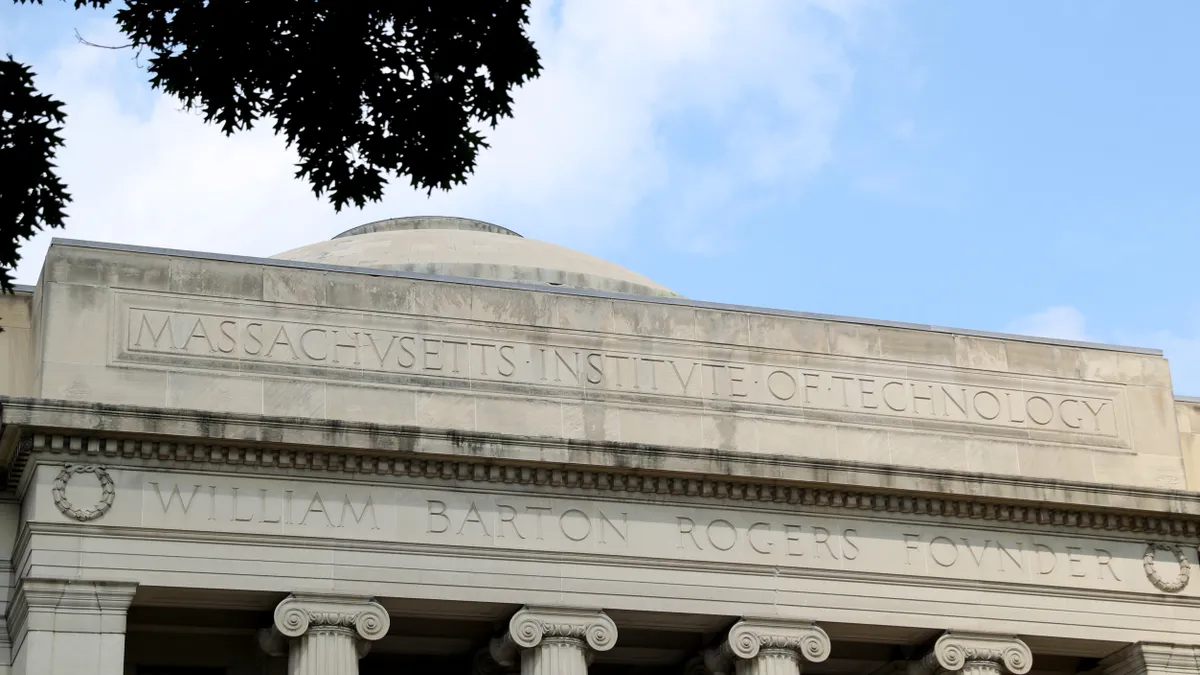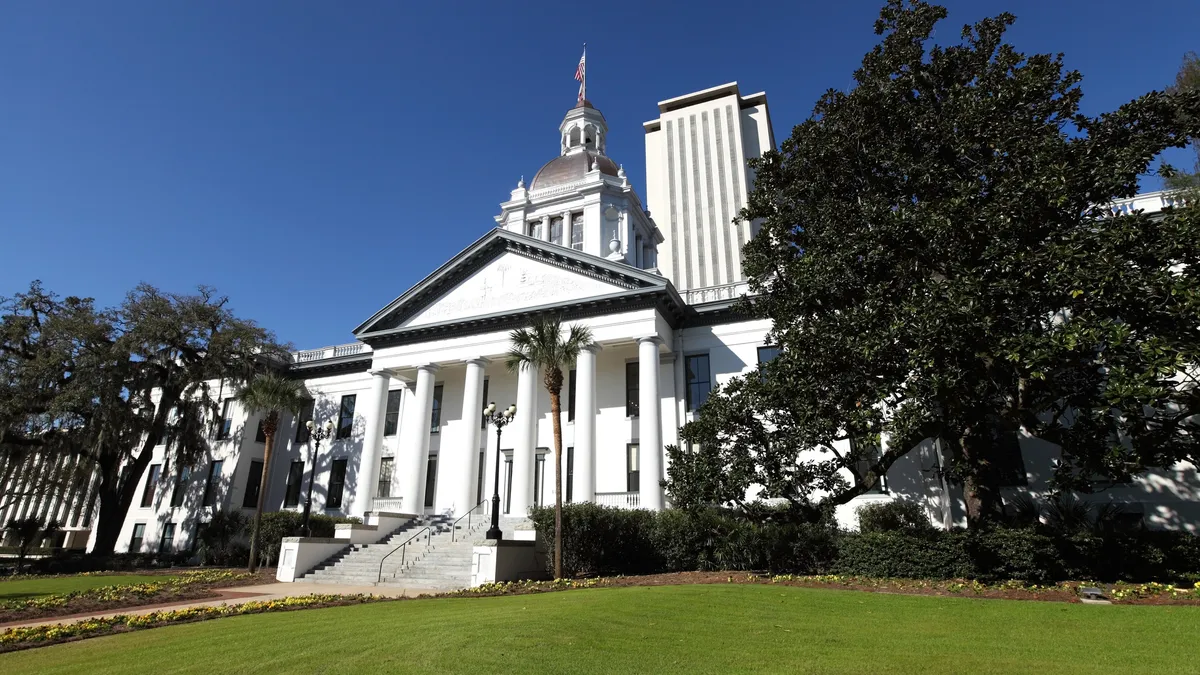In October, the University of Michigan became one of the latest colleges to adopt institutional neutrality. Moving forward, the state flagship's official statements won’t comment on current affairs that don’t affect its direct interests.
“Institutional statements disserve the university’s mission,” Regent Sarah Hubbard, who supported the effort, said at the meeting approving the policy. “They undermine our commitment to open inquiry by suggesting that those who disagree are unwelcome. They cause would-be dissenters to worry that voicing disagreement may jeopardize admission, grades or advancement.”
At least two dozen institutions have adopted some type of institutional neutrality policy in recent years, although they differ on specifics. Louisiana State, Northwestern, Harvard, Stanford and Johns Hopkins universities have all adopted these policies.
These moves can help stave off political controversy for institutions, experts say. But they may require careful conversations about a college’s mission and goals, as well as what exactly the policy will look like.
Adoption of these policies has surged after last spring’s student protests over the Israel-Hamas war.
“Some universities — in particular private universities — are adopting neutrality policies because they didn’t like the position they were put in,” said Jeremy Young, who leads Pen America's program against educational censorship. “Adopting a neutrality policy allows them to reset.”
What’s the history of institutional neutrality?
Although the concept has gained popularity recently, neutrality is not new for universities. The genesis of the idea is most often traced back to a 1967 University of Chicago report, which argued that the institution must remain neutral in order to be a home to a wide diversity of views.
The report came a year after student activists held a three-day sit-in, calling on the University of Chicago administration to not send class ranks to the Selective Service.
At the time, U.S. policy made college men in the bottom half of the first-year class immediately eligible for the Vietnam War draft.
Amid this climate, university officials declared the institution would remain neutral. “The university is the home and sponsor of critics; it is not itself the critic,” the 1967 report asserted.
However, the university also decided that year that it wouldn’t send grades or class ranks to the Selective Service.
Despite the University of Chicago’s high-profile report, the concept of institutional neutrality predates the 1960s, said Joan Scott, former chair and current member of the academic freedom and tenure committee at the American Association of University Professors.
At the turn of the 20th century, the University of Chicago was facing scrutiny from politicians who viewed it as too progressive, according to Scott, who is a historian. The university declared that it wouldn’t take a position on public questions, though faculty members could voice their own individual perspectives.
Institutional neutrality is often discussed as a free speech principle, she said. But it is also a tactic developed to distance colleges from the political fracas.
“If you look at the history of institutional neutrality, it always comes in the face of some kind of attack or perceived attack on higher education,” Scott said.
Today, that pressure is twofold. When universities released statements about the Oct. 7 attack by Hamas on Israel, they often faced backlash from both pro-Palestinian students and pro-Israel donors and politicians.
For example, at the University of Pennsylvania, then-President Liz Magill sent out eight emails to the student body about antisemitism and the Israel-Hamas war between September 2023 and December 2023. Some students condemned her response for not addressing Palestinian suffering. But at the same time, other students, as well as donors and politicians, said the university failed to handle antisemitism on campus.
She testified before the House’s education committee about the university’s response to the campus unrest in December last year, drawing further backlash and accusations that the institution failed to protect Jewish students. Days later, Magill resigned.
A hotly debated principle
Some members of college communities have grown accustomed to university statements, and come to see the absence of a statement as a political decision in itself, said Ryan Ansloan, senior program officer for policy reform at Foundation for Individual Rights and Expression, a free speech organization that advocates for institutional neutrality.
But the intellectual underpinnings of institutional neutrality policies are hotly debated by academics and advocates.
Proponents of these policies argue they protect academic freedom. University and department statements can have a chilling effect on discourse by encouraging silence from students and faculty who don’t agree, advocates say.
“Adopting a position of institutional neutrality returns the focus to the campus community for them to have that conversation,” Ansloan said.
However, not everyone agrees, even among university leaders. Peter Salovey, former president of Yale University, said in a recent essay he believes an institutional neutrality policy can be an abdication of leadership.
“In my 11 years as President of Yale University, there was no shortage of faculty, staff, student and alumni disagreement with my point of view on various issues. And that’s a good thing,” he wrote in an opinion piece published in Elsevier. “Quite frankly, I doubt I intimidated anyone into silence; it seemed to be just the opposite.”
Additionally, some faculty members have bristled at the idea that these policies are meant to protect them.
University of Chicago philosophy professor Anton Ford has argued that the college’s institutional neutrality policy doesn’t achieve its lofty aims.
Deferring to the status quo does not make an institution neutral, Ford argued in an op-ed for The Chronicle of Higher Education.
“It is equivalent to saying that, as a matter of general policy, the institution will not entertain arguments to the effect that it should change,” he wrote. “That is a mere assertion of power.”
Ford's colleague at the University of Chicago, Agnes Callard, similarly called for a reevaluation of the institution's neutrality policy in a piece for The Point.
Student activists, for their part, have portrayed the policies as a way to quell political expression on campuses and sidestep calls to divest from companies with ties to Israel.
What counts as neutrality?
For institutions that adopt institutional neutrality policies, either for tactical or intellectual reasons, the decision can bring up further conversations.
One is figuring out what counts as institutional neutrality. Some institutions have applied the policy to just the statements of the president. Others have applied it to the total actions of the institution and all its bodies and departments.
Daniel Diermeier, chancellor of Vanderbilt University and a proponent of institutional neutrality, believes in the latter approach.
Even a college’s school or department choosing to make a statement can isolate faculty and students who don’t agree, Diermeier said. Actions, like investment decisions, are part of that same atmosphere, he added.
“If you want to be vocal about an issue, do it in your own name,” Diermeier said.
Institutional neutrality policies might be difficult for colleges with unique missions, such as service academies or religiously-affiliated universities. But even though those institutions may need to draw their lines a little differently, they can still adopt the policies, Diermeier said.
“The general logic of institutional neutrality applies there as well,” he said.
Decisions about institutional neutrality are often up to university administrations, but state lawmakers are increasingly mandating such policies. Seven state legislatures introduced bills in 2024 to require institutional neutrality, according to Pen America. Three of those became laws, in Indiana, Iowa and Utah.
Pen America has listed state-mandated institutional neutrality as a potential threat to academic freedom, though the organization doesn’t necessarily oppose these policies when institutions implement them themselves.
These laws can be vague and use broad language, setting up the legislature alone to judge what is acceptable for college leaders to say, said Young, from Pen America. Two of the three laws specifically call out gender, LGBTQ and race as issues the university cannot comment on.
“It’s really telling that when they do try to mandate institutional neutrality, it’s not about the issue that universities actually failed on, foreign relations,” Young said. “Instead it’s all about race, gender and identity.”
Overall, institutional neutrality policies don’t appear to be going away any time soon.
“The march of this policy through the institutions is accelerating,” Young said. “That’s going to continue.”






















